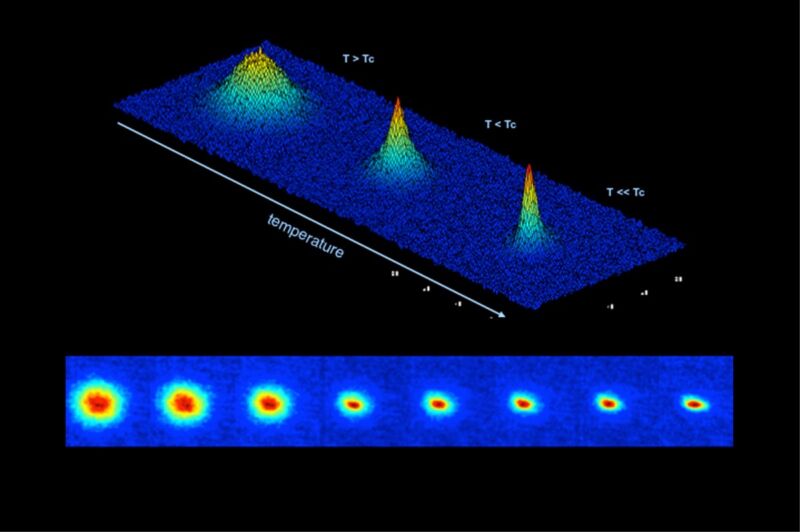A chilling first: Physicists create exotic “fifth form of matter” on board the ISS

Enlarge / This sequence of false-color images shows the formation of a Bose-Einstein condensate in the Cold Atom Laboratory prototype at NASA's Jet Propulsion Laboratory as the temperature gets progressively closer to absolute zero, the temperature at which atoms have almost no motion. (credit: NASA/JPL-Caltech)
Physicists at Caltech and the Jet Propulsion Laboratory have created a rare quantum state of matter known as a Bose-Einstein condensate (BEC) in space for the first time, according to a recent paper published in the journal Nature. The physicists did so by placing a compact experimental setup the size of a mini-fridge on board the International Space Station (ISS). It's called the Cold Atom Laboratory (CAL), aka "the coolest spot in the universe."
BECs are named in honor of Albert Einstein and Indian physicist Satyendra Bose, who predicted the possibility in the 1920s that the wavelike nature of atoms might allow the atoms to spread out and overlap if they are packed closely enough together. At normal temperatures, atoms act like billiard balls, bouncing off one another. Lowering the temperature reduces their speed. If the temperature gets low enough (billionths of a degree above absolute zero) and the atoms are densely packed enough, the different matter waves will be able to "sense" one another and coordinate themselves as if they were one big "superatom."
Physicists Eric Cornell and Carl Wieman, then at the University of Colorado's JILA facility, created the first BECs in the laboratory in 1995. Using a laser trap, they cooled about 10 million rubidium gas atoms; the cooled atoms were held in place by a magnetic field. But the atoms still weren't cold enough to form a BEC, so they added a second step, evaporative cooling, in which a web of magnetic fields conspire to kick out the hottest atoms so that the cooler atoms can move more closely together. The process works in much the same way that evaporative cooling occurs with your morning cup of coffee; the hotter atoms rise to the top of the magnetic trap and "jump out" as steam.
Read 7 remaining paragraphs | Comments
from Ars Technica https://ift.tt/2YCpNmi
via Whole story

Post a Comment